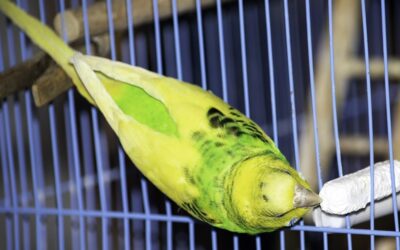If you own a hamster, you’ll know that these little rodents need a lot of exercise to stay happy and healthy. For this reason, you may have invested or be thinking of investing in a hamster ball. These transparent plastic balls open up to allow you to place your hamster inside, after which it can supposedly safely run around the house without getting lost or being in danger from other pets.
However, hamster balls have come under fire in recent years for supposedly being unsafe. Is this true? Are hamster balls bad? Kate’s K9 Pet Care explains!
Are hamster balls bad?
Hamster balls are one of those typical pet-related items that have been around for a long time, with people only really starting to ask themselves now whether they’re actually as good for our furry friends as we’ve always thought (like mini bowls for Betta fish or all-seed diets for parrots).
The idea sounds great: hammie gets to run around and explore safely, outside of the confines of its cage. Considering the fact that letting your hamster free-roam on its own can lead to losing it or it getting hurt, and that they need a lot of exercise, these are definite pros in favor of using hamster balls.
The bad news? In practice, hamster balls have way more cons than pros. British organizations like the RSPCA and the Blue Cross have already issued statements saying they strongly recommend against their use! The USA appears slower to catch on, but many hamster owners have already gotten rid of their hamster balls in favor of better exercise methods for their pets.
So, for the short answer: Yes, hamster balls are bad. Below, we’ll go into the three main reasons: stress, injury, and hygiene.

Why are hamster balls bad?
Stress
The main reason to avoid using hamster balls is because they cause stress. Hamsters are very sensitive, much more so than other pet rodents like rats. Constant exposure to stress can significantly shorten their lifespans. It can make them more sensitive to disease and it can also result in a shy hamster that’s unwilling to interact with its human family.
But what could possibly be so bad about these balls? Here’s a (non-exhaustive) list of things about hamster balls that can stress your hamster out:
- It’s trapped without food, water, or cover. This makes it feel unsafe.
- Its sense of smell and use of whiskers to feel its way around the world are restricted.
- Hamsters don’t have good eyesight, so they’ll bump into things like furniture.
- The ball can become hot and stuffy, as the ventilation slits aren’t really sufficient.
Injury
As if the stress of being locked in a bare ball that rolls around uncontrollably, unable to see where it’s going wasn’t enough, hamster balls can also be downright dangerous to your hamster’s physical well-being.
Firstly, you may have heard of the risks of using hamster wheels that are too small and how they can damage a hamster’s spine. The same concept applies to hamster balls, some of which are too small to even accommodate a dwarf hamster, let alone larger species like Syrians. If their necks are continuously bent backward while they run around, their backs can end up permanently damaged.
Additionally, we’ve already discussed that the ventilation slits in a hamster ball don’t let in enough air. That’s not the only problem with them, though: they can also trap hamster feet and toes, which can unfortunately cause injuries. A ripped nail, broken toe, or even a broken limb is highly traumatic to your hamster. And don’t forget the resulting vet bills!
Hygiene
Hamsters don’t think much about when they pee and poop, especially when they’re running. This can cause your hamster to become stuck in the ball with its own feces or urine, running around in it and getting covered in it until you notice and take it out.
If it has any injuries, resulting from its time in the ball or otherwise, this also increases the risk of infection.
But my hamster loves its ball!
Some hamster owners report their hamster voluntarily hopping into a hamster ball and appearing to enjoy it, citing this and the fact that our pets do need exercise as reasons to continue using these devices.
But is your hamster really having fun?
- Hamsters will climb into pretty much any object; they’re probably not aware that they’ll be trapped and rolling around afterward.
- There’s no way for them to tell you they want out.
- The fact that your hamster runs in its ball doesn’t mean it’s having fun—it may be feeling stressed and trying to get away.
- Even if your hamster is actually enjoying the ball, it can still cause injuries.
Hamster ball alternatives
It should hopefully be clear by now that a hamster ball is not a suitable exercise device for your hamster. But what alternatives do you have? After all, hamsters absolutely love running. In the wild, they can cover multiple miles each night as they speed around their burrows and through low vegetation. Not being able to run and move around can cause them stress.
Hamster enthusiasts agree that there are two perfectly safe ways to allow your hamster to run and play, as well as one option that can be safe when done right. Our favorite is a simple playpen. These are cheap and easy to set up by just folding them out and filling them with some of your hamster’s favorite hides, food and water bowls, and other items. Add some new stuff for hammie to explore, plus maybe a suitable exercise wheel, and voilà! Hamster exercise paradise.
If you can’t afford a playpen or don’t want to buy one, you can also let your hamster play in a bathtub. Make sure the tub is fully dry and free of soap residue, lay some blankets on the bottom, and again add your hamster’s favorite items plus some fun new toys or foods. This way it can safely zoom around without being able to wander off and get itself hurt.
Lastly, there’s the possibility of letting your hamster roam free (supervised). In terms of how much distance it can cover, this is ideal, but it does come with some caveats. It’s unfortunately very easy to lose a hamster, and various household items that are perfectly safe for us can pose a danger to our furry friends. If you would like to let your hamster free roam, make sure it’s tame and allows you to pick it up when needed. You could consider “hamster-proofing” a single room to eliminate the risk of losing your pet or it getting hurt.
It goes without saying that your hamster should never be allowed to free roam in a space that contains other pets, like cats or dogs. And make sure everyone’s aware when hammie is out so he doesn’t get stepped on!

Include some novel items and foods in your hamster’s playpen to keep it busy exploring!
Conclusion
So, are hamster balls bad? Unfortunately, yes, their cons very much outweigh their pros. The good news, though, is that there are a few great alternatives that allow your hamster to run around safely! Setting up a hamster playpen is a particularly good option that’s much less dangerous.







